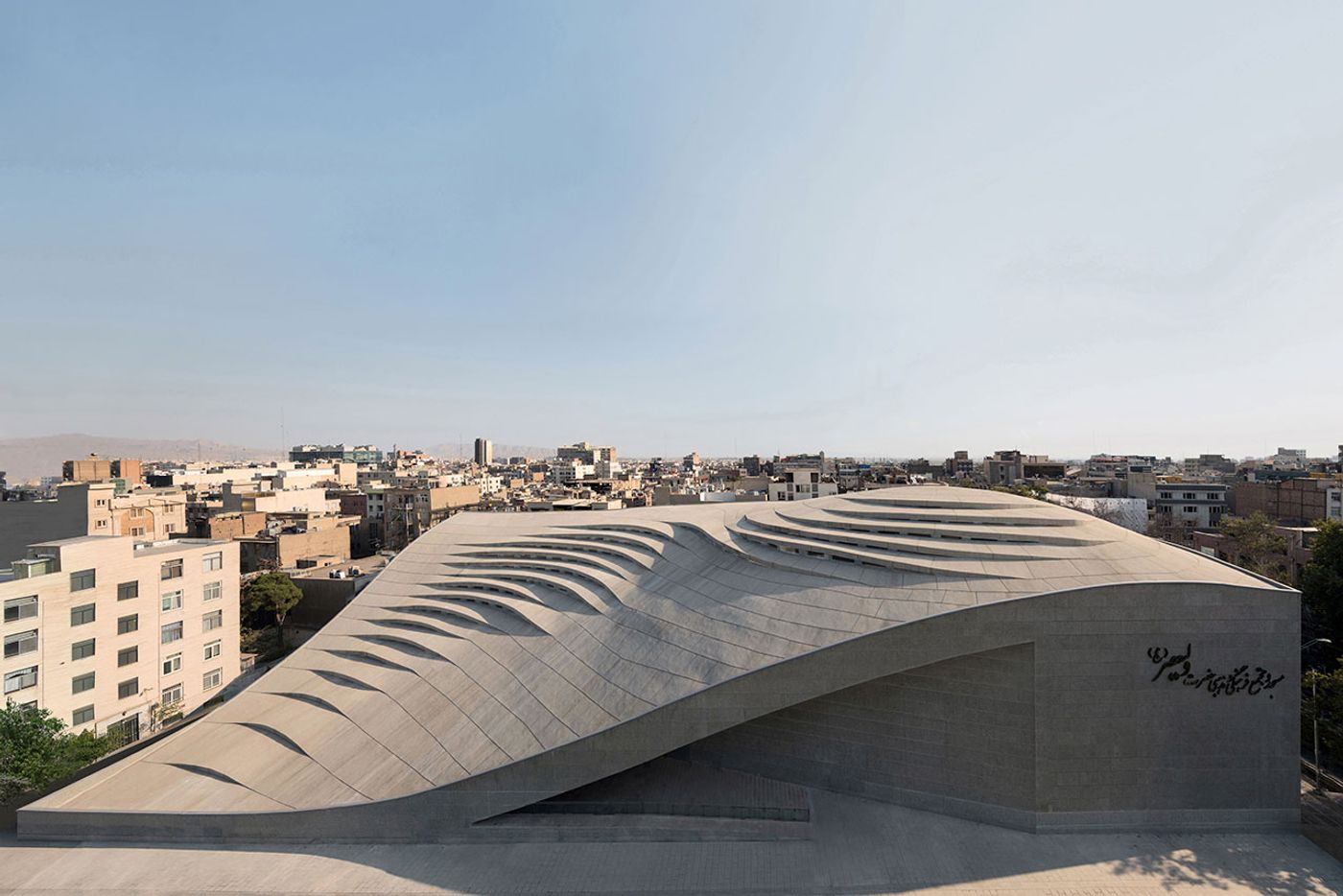
The Groundbreaking Modesty of Vali-e-Asr Mosque in Tehran
Words by Yatzer
Location
Tehran, Iran
The Groundbreaking Modesty of Vali-e-Asr Mosque in Tehran
Words by Yatzer
Tehran, Iran
Tehran, Iran
Location
Centrally located in the Iranian capital Tehran, the Vali-e-Asr Mosque’s most distinguishing aspect is the fact that it does not look like a mosque. Designed by Iranian architects Reza Daneshmir and Catherine Spiridonoff of Fluid Motion Architects, the building eschews the stereotypical typology of large domes and tall minarets in favour of a modest horizontality thereby making the mosque harmoniously co-exist with the surrounding buildings and adjacent park. Organically rising from the street level towards Mecca, in a tiered configuration of concave and convex strips that create a spectacular interior, the Mosque’s gentle slope allows the building not only to become part of the public space but to also make it more inviting while enhancing the sense of spirituality.
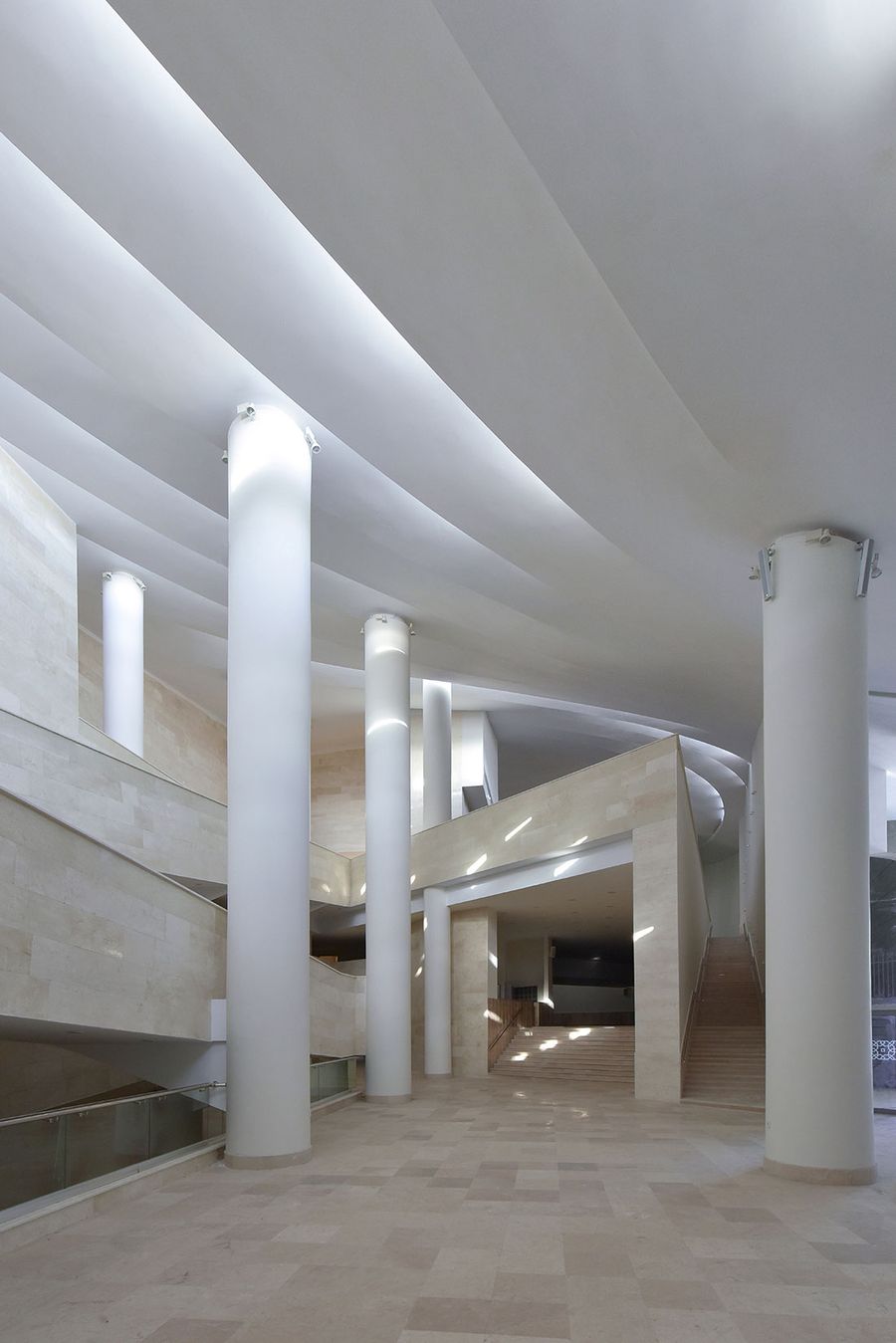
Entrance lobby. Photo by Deed Studio.

The women's praying hall. Photo by Deed Studio.
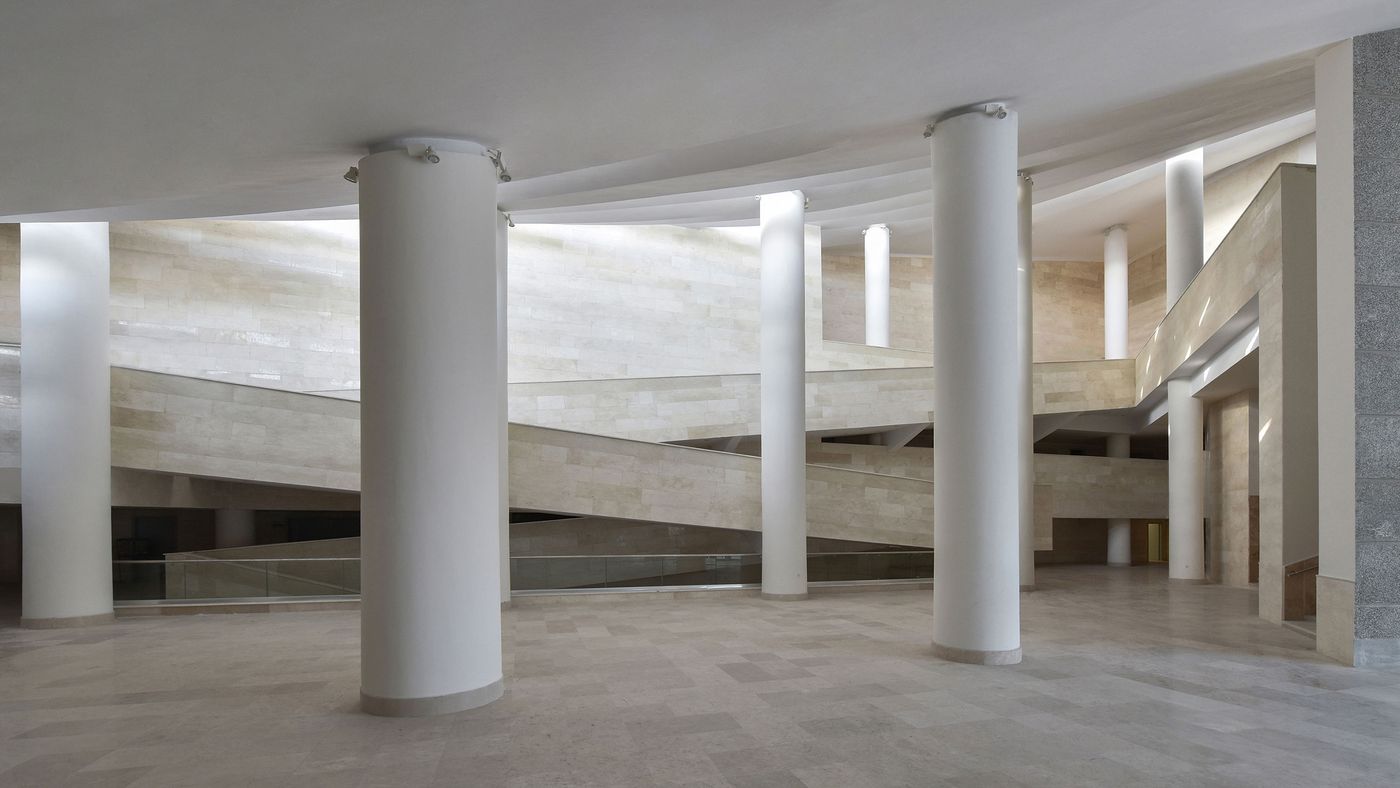
Entrance lobby and view of the access ramps. Photo by Deed Studio.
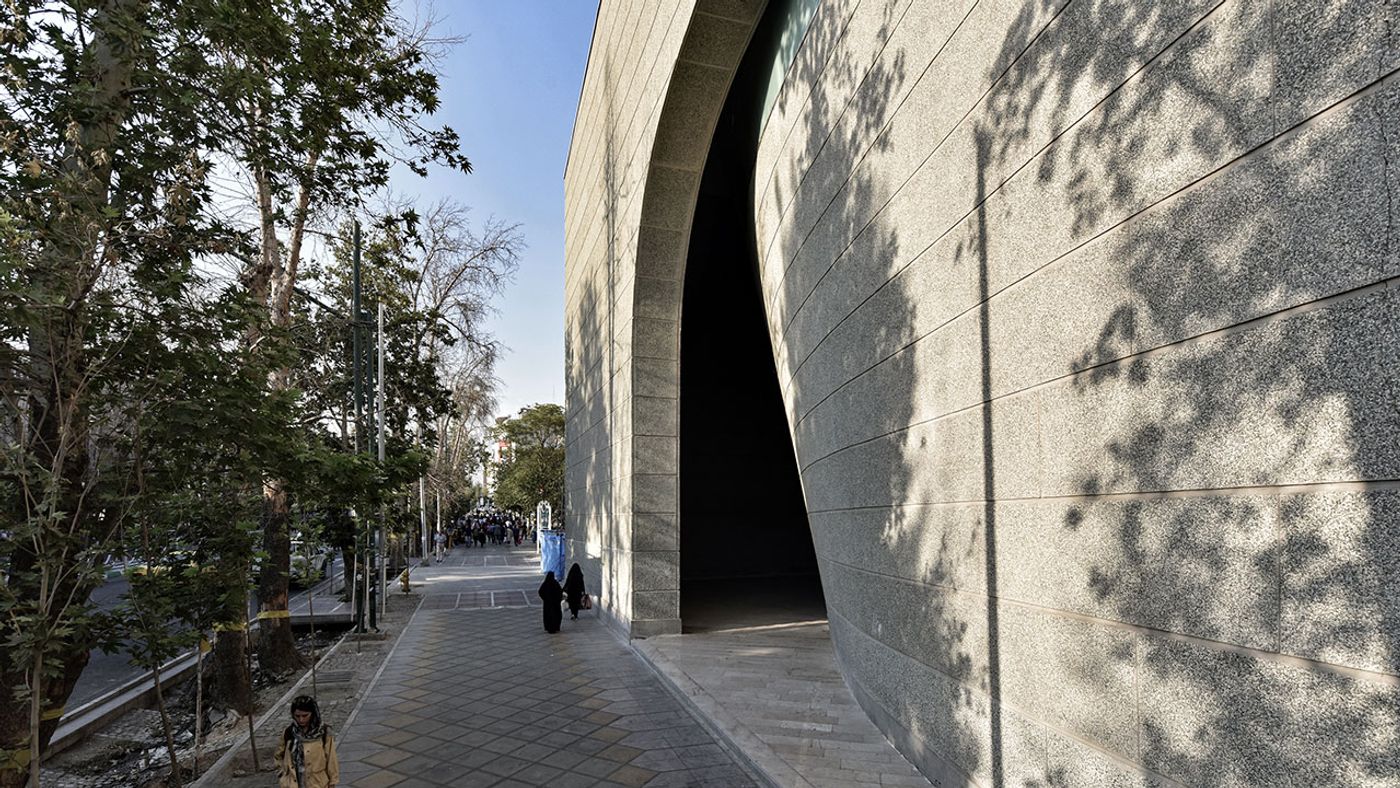
West entrance from Valiasr Street. Photo by Deed Studio.
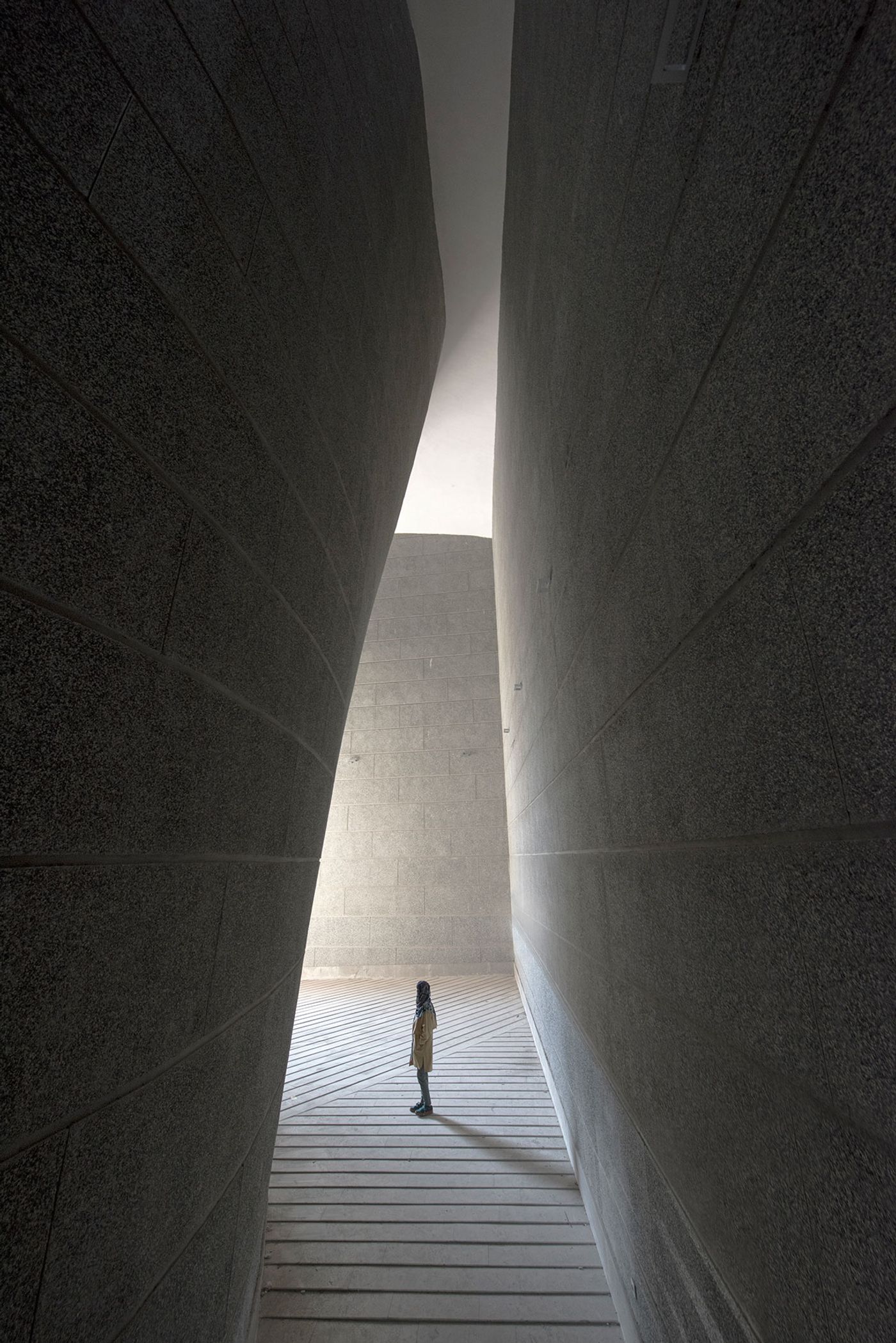
Interior view of the western entrance. Photo by Deed Studio.
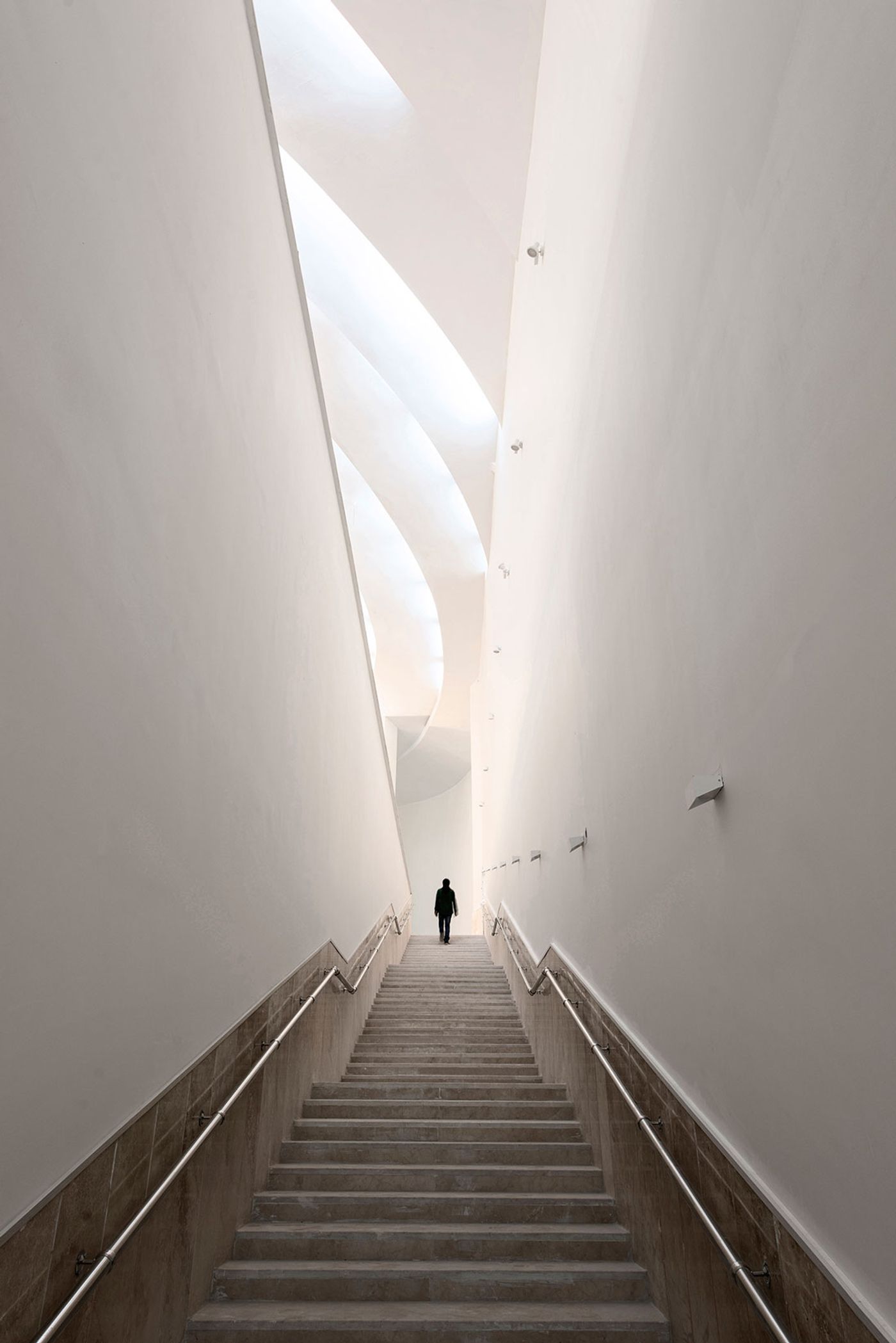
A staircase leading to the praying halls. Photo by Deed Studio.
The mosque’s tradition-defying design proved quite controversial in conservative Iran; in fact the history of its construction is as interesting as the finished building. The project was initially spearheaded by one of Tehran’s previous mayors who envisioned a grand dome of 55 metres in height overshadowing the adjacent pre-revolutionary City Theatre as a religious statement in an area that also hosts the country’s most prestigious university and some of the city’s largest bookstores. Following popular opposition due to its oversized scale, the project was put on hold for two years until 2007 when Fluid Motion Architects were commissioned to produce a new design which nonetheless had to incorporate those parts of the old design that had already been built. The new design’s controversial modesty brought about legal challenges from prominent conservative circles that resulted in delays and budgetary constraints. It may have taken more than 10 years for the Vali-e-asr Mosque to be finished but Fluid Motion’s innovative design was well worth it.
Rising from the street level to the height of the neighbouring City Theatre, the mosque is organically interweaved into the public space, neither eclipsing nor being eclipsed by the surrounding cultural institutions. “We tried to create an interaction between the mosque, which has a cultural essence, and the City theatre” the architects explain. “We wanted to make it a cultural project that would be in harmony with its surroundings.” To do so, they looked back in time, finding inspiration in the 7th century Quba Mosque in Medina, Saudi Arabia, which dates back to the lifetime of the prophet Muhammad and is considered to be the first mosque in Islam.
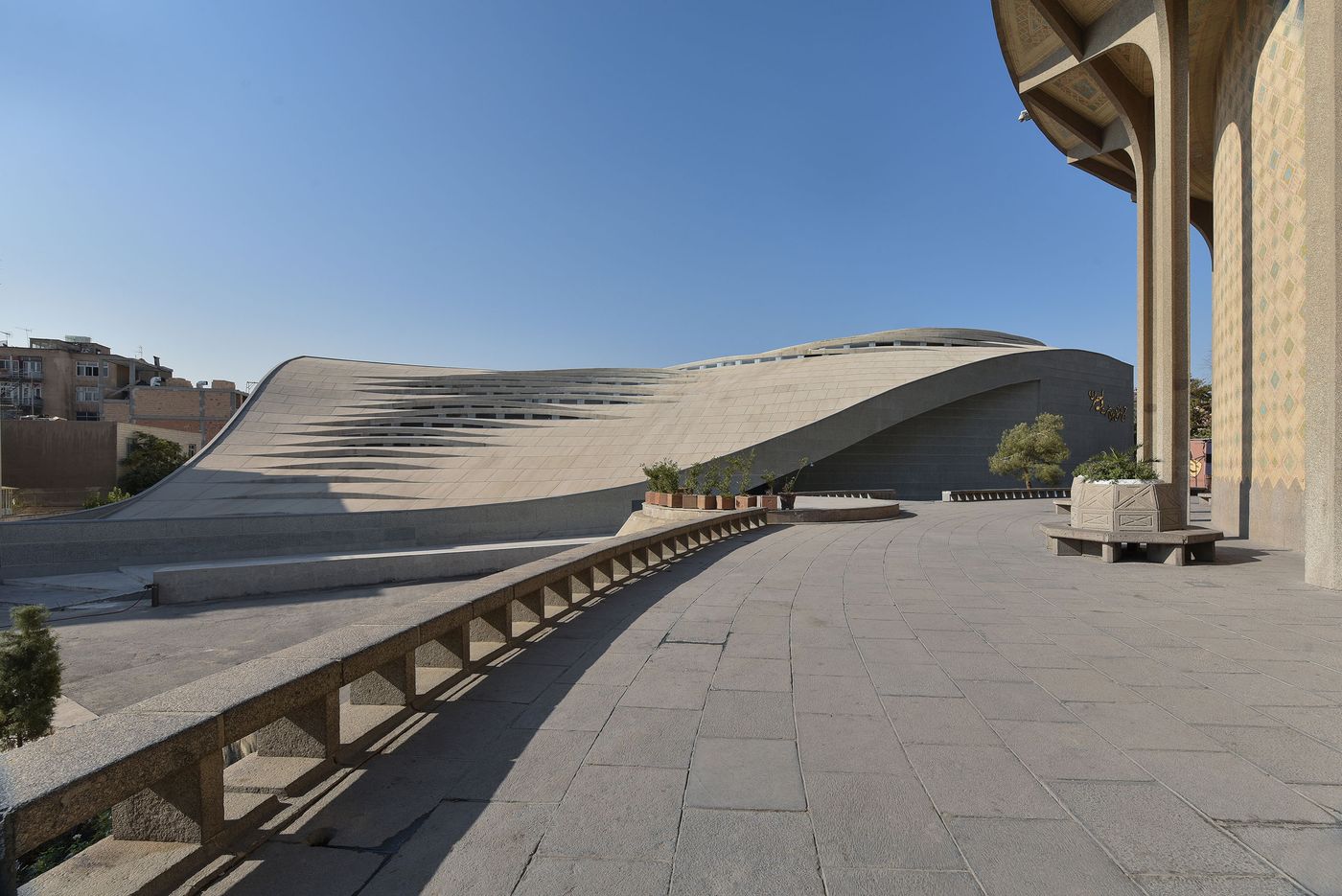
View from the North (earth to heaven). Photo by Deed Studio.
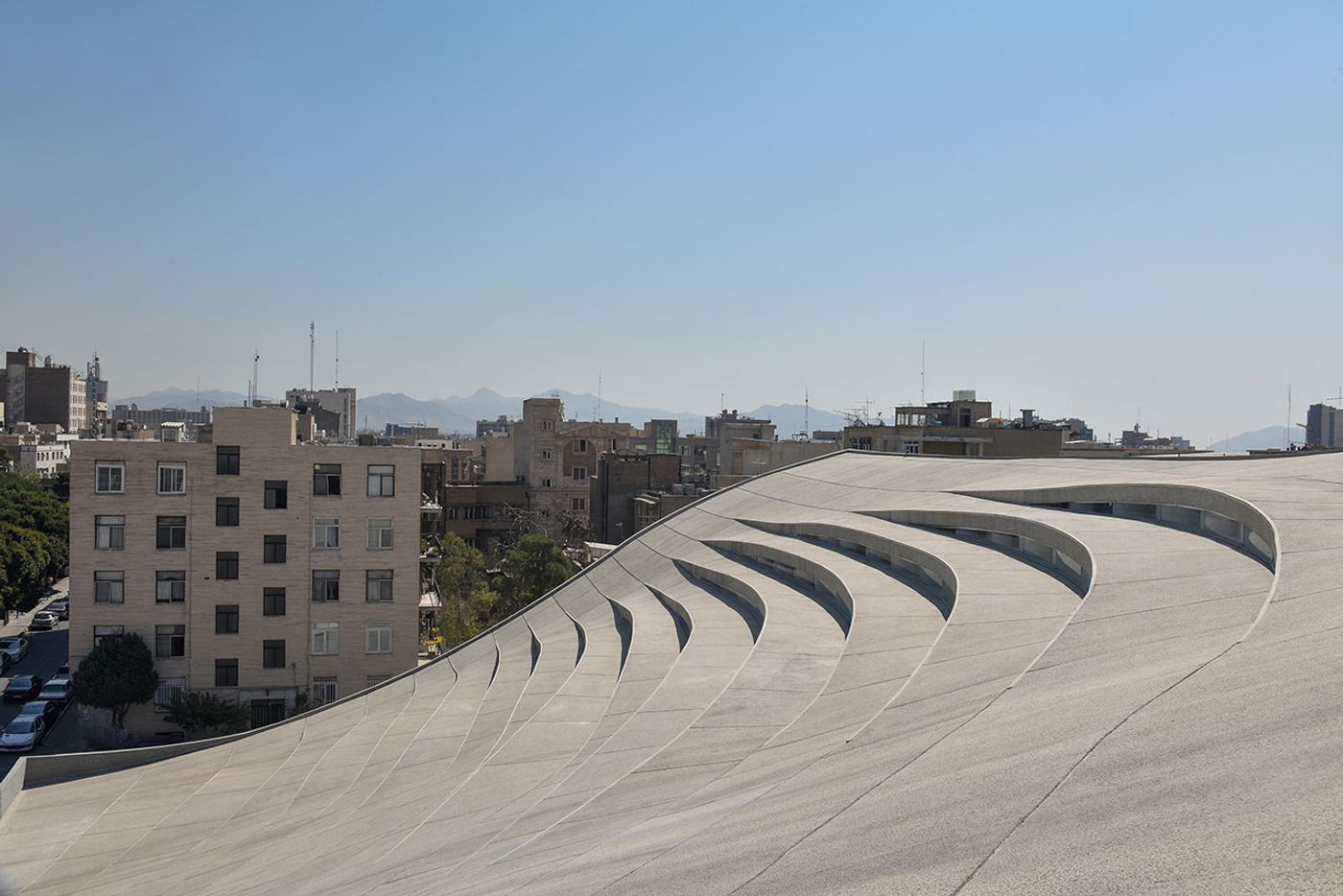
The sloping roof. Photo by Deed Studio.
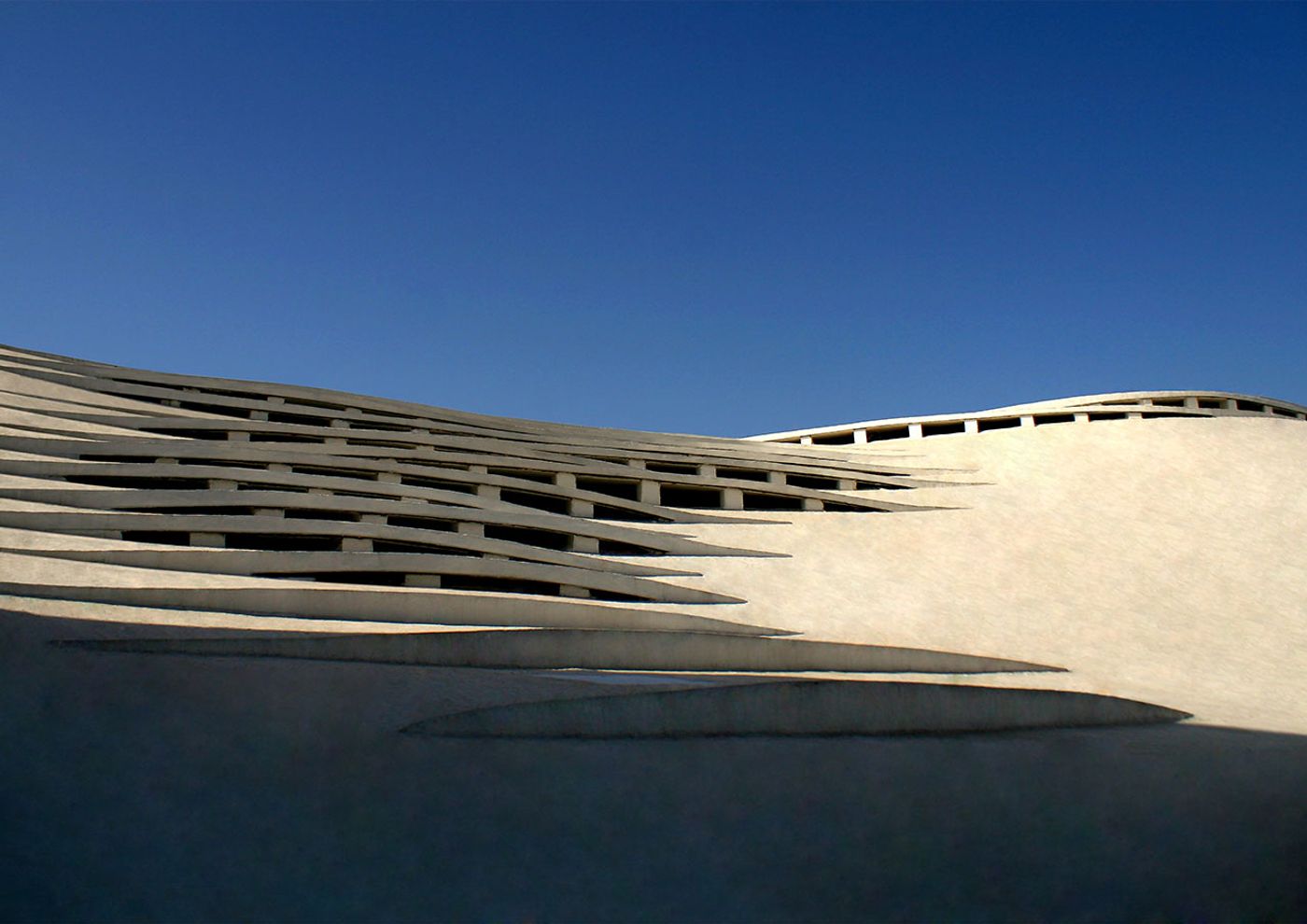
View of the roof. Photo by Hassan Asnavandi.

The splits of the roof. Photo by Deed Studio.
The design of the mosque’s sloping roof was based on a complex geometry of ribbed vaults and intersecting arches named Karbandi which was developed in Persia for the construction of domed spaces. Incorporated into the roof’s design, a series of splits provide sunlight, air flow and natural ventilation, and enhance the connection between the interior and exterior. From the outside they appear like fish gills while inside they create a spiral movement that starts from the entrance hall and soars to the prayer hall which occupies the tallest space in the building. With the total floor area of 25,000 square metres, the mosque also houses a series of communal spaces such as a library, meeting hall and classrooms, as well as four underground levels of parking, connected via gently sloping ramps to make circulation easier for the elderly, the disabled and parents with strollers.
Faced with the aforementioned budgetary restraints, the architects applied a simple interior aesthetic based on inexpensive cream marble for the flooring and walls of the main spaces, and white coloured plaster for the ceilings and columns. The minimalist, all-white décor may be the result of cost cutting but it proved ideal as it allows the soaring architecture to take center stage and imbues the interiors with a soothing ambience. Meanwhile, washed concrete was used for the mosque’s roof and façade echoing the colour of the City Theatre next door, a gesture that further enhances the harmonious relationship between the two buildings as well as spurring a productive dialogue between religion and culture.
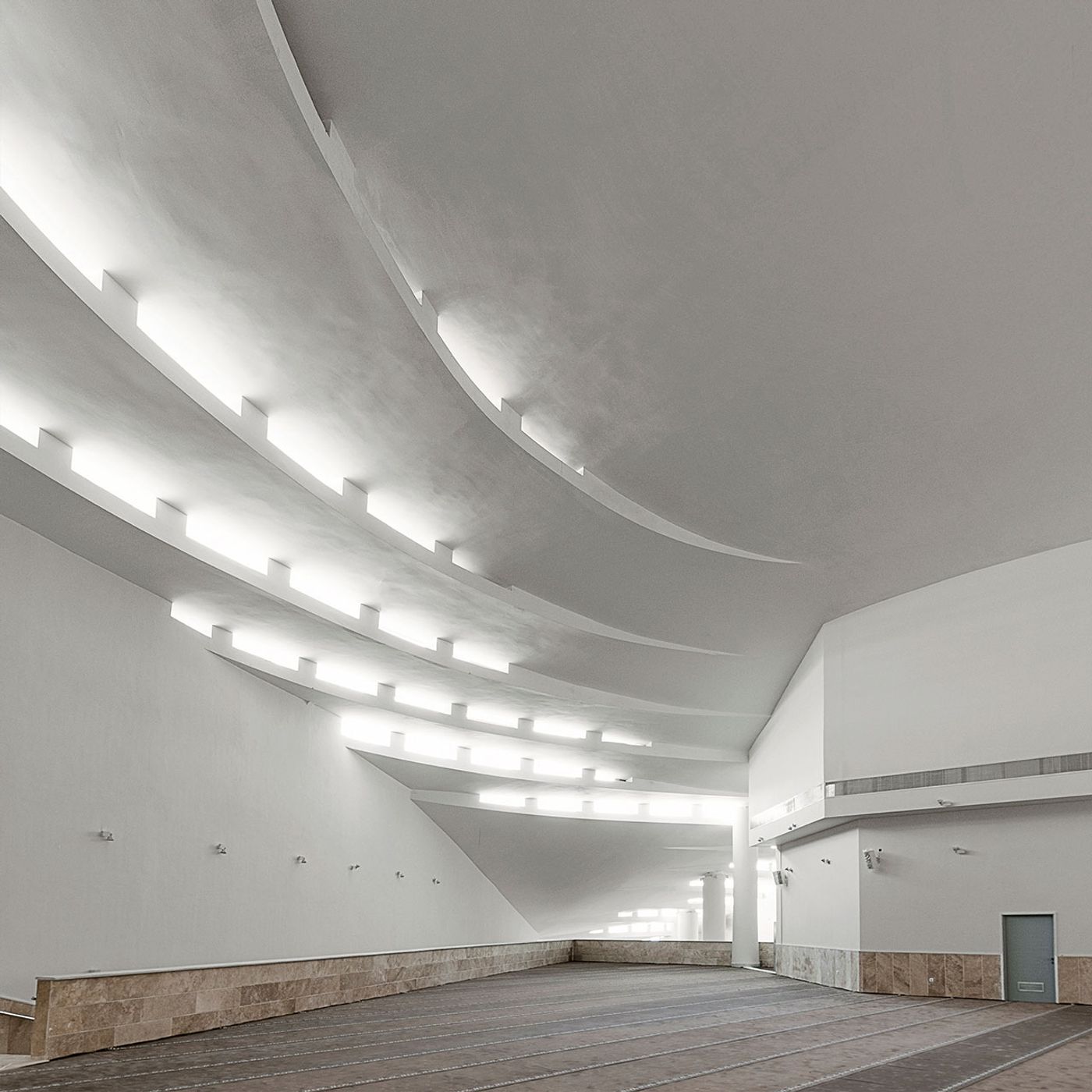
View of the women's praying hall. Photo by Deed Studio.
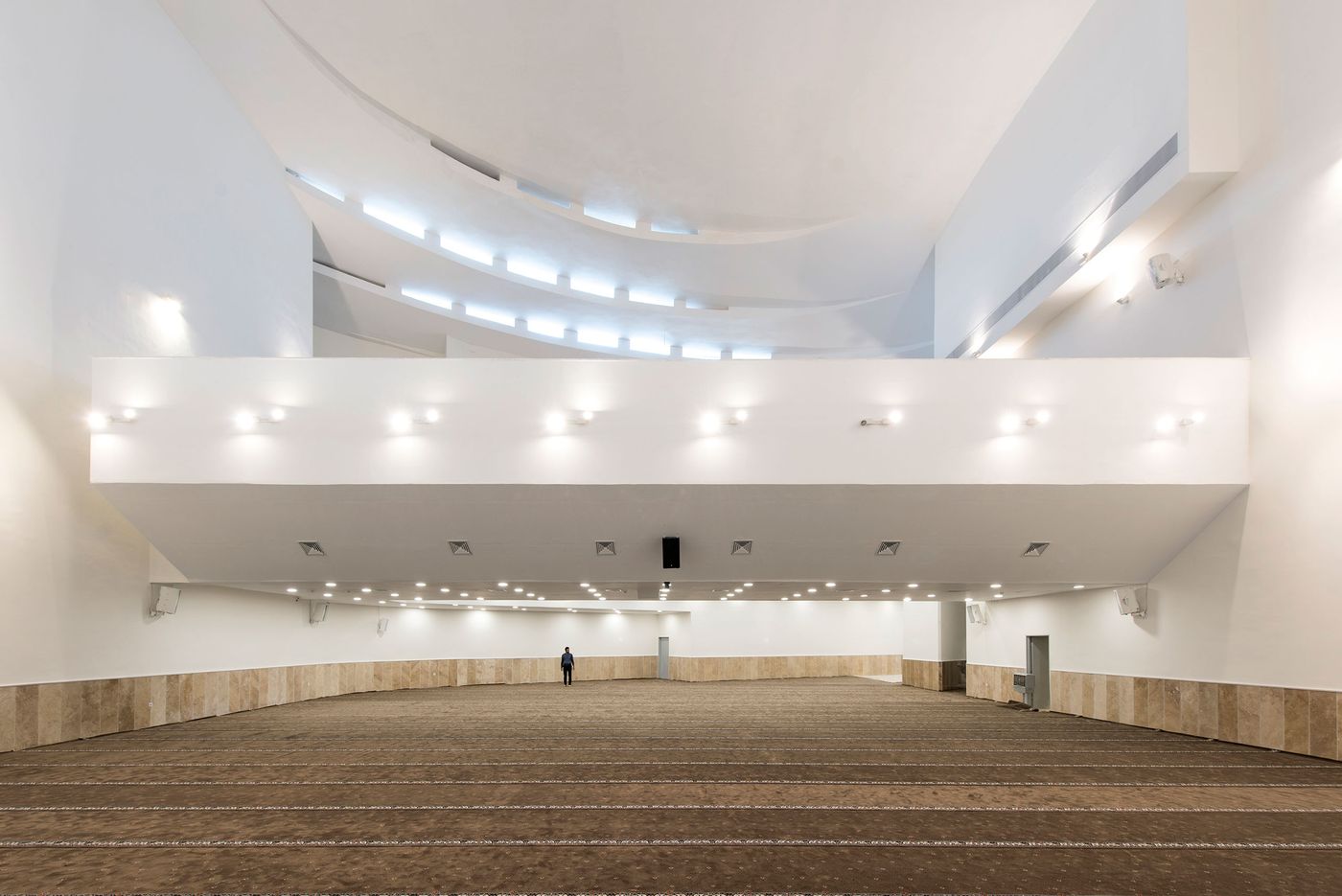
View of the praying hall from the Mihrab (the nearest point to Mecca towards which the congregation faces to pray). Photo by Deed Studio.
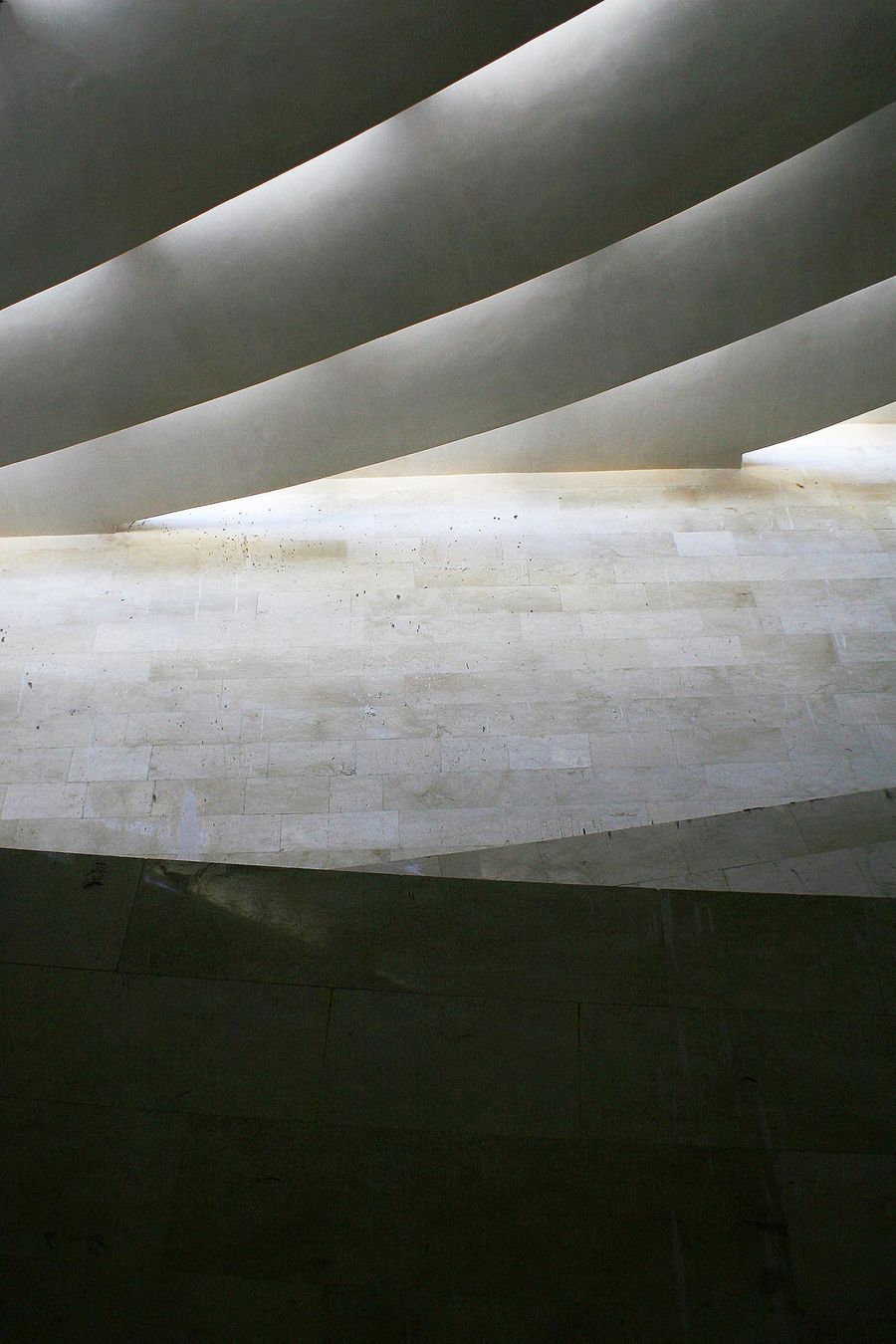
View of the access ramps and roof structure. Photo by Hassan Asnavandi.
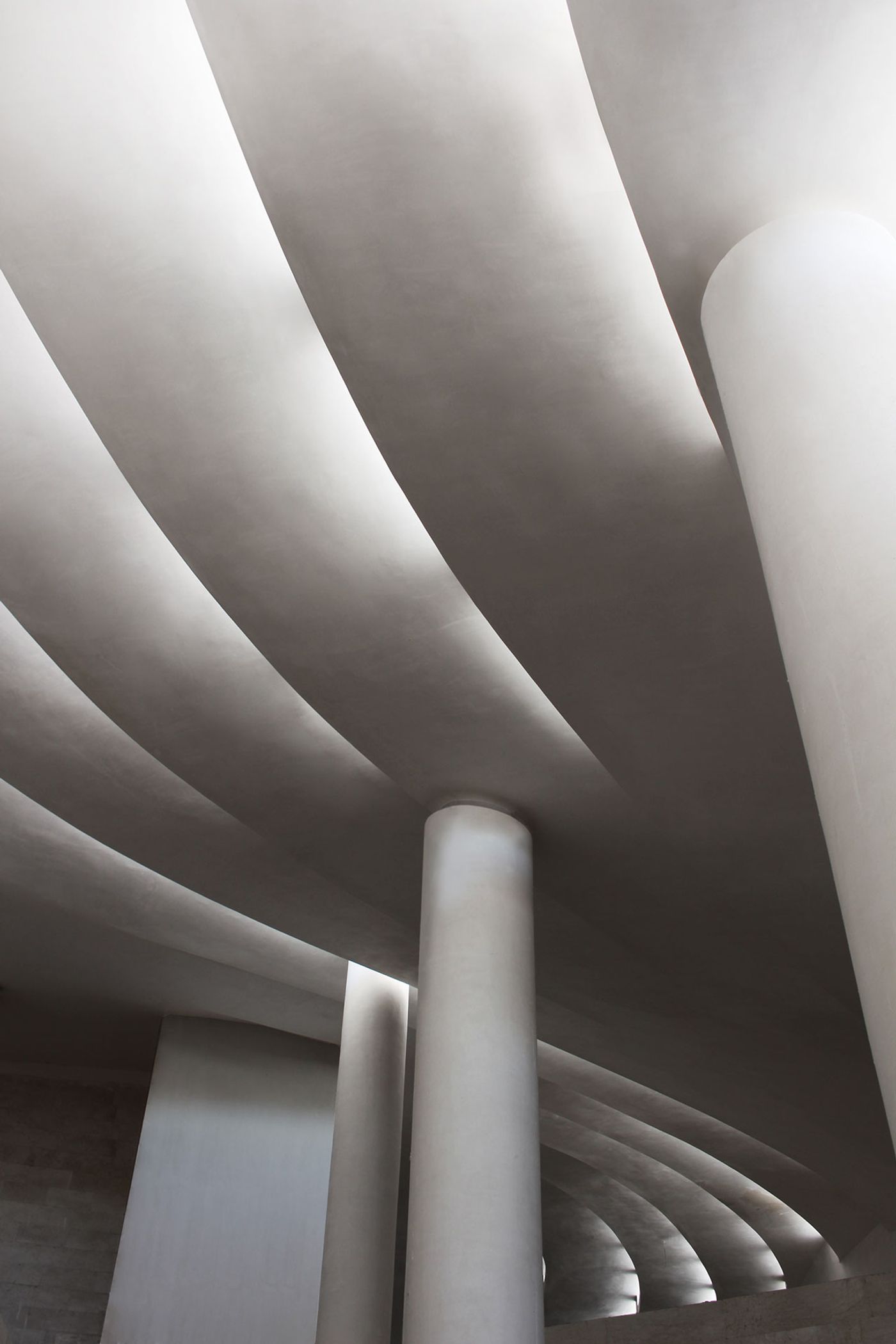
Interior view to the spiral movements of the ceiling. Photo by Deed Studio.
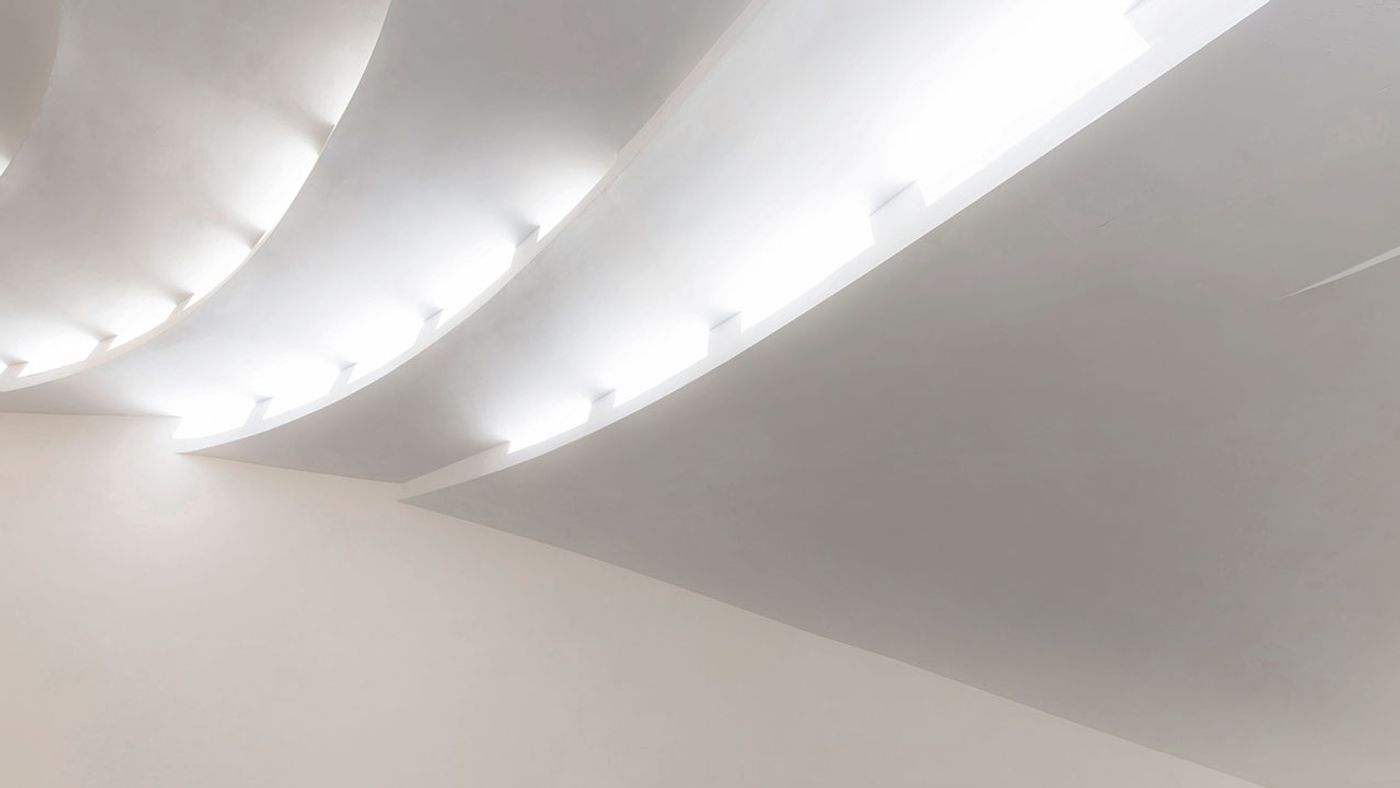
Interior view of the roof splits with sunlight flooding in. Photo by Deed Studio.